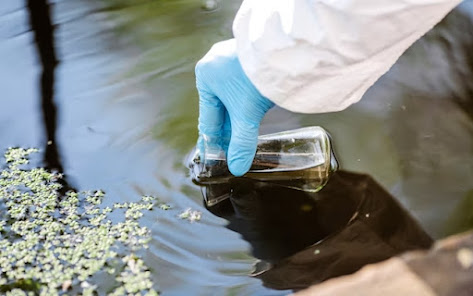The Ultimate Guide to Water Quality Testing
In a country like Qatar, where water is a valuable resource, monitoring, testing, and maintaining water quality is critical to protecting our health, environment, and industry. Understanding what's in your water, whether it's for drinking, farming, or swimming, is the first step toward ensuring its safety.
Test Needs offers comprehensive water quality testing services to help homes, farmers, councils, and companies discover hazardous contaminants and make informed water use decisions. Here's an in-depth look at the importance of water quality testing and the specific tests available at our advanced testing facility.
Why Water Quality Testing is Crucial
1. Preserving Human Health
Water contaminated with heavy metals, microorganisms, or pesticides can endanger human health. Regular testing assures that water used for drinking, cooking, or bathing is safe and free of contaminants that might cause sickness or long-term injury.
2. Environmental Protection
Aquatic life depends on healthy water systems. Pollutants such as nitrates, phosphates, and heavy metals can cause algal blooms, low oxygen levels, and ecological degradation.
3. Supporting Agriculture and Industry.
Crops and livestock require clean water. Contaminated irrigation water can damage plant growth and bring poisons into the food chain. Many businesses rely on high-quality water for production and processing.
4. Maintaining Compliance.
Water testing enables businesses to comply with local environmental and public health standards. This involves meeting wastewater discharge regulations and providing safe water for public consumption.
What We Test: Test Needs
At Test Needs, we provide a wide range of water quality tests, each designed to evaluate a different component of your water sample:
Temperature
Water temperature affects biological activities and oxygen levels. Elevated temperatures reduce oxygen solubility, which affects aquatic creatures.
pH levels
We measure the acidity or alkalinity of water. Most aquatic life thrives in a pH range of 6.5 to 8.5; anything outside of this range can be harmful or fatal to sensitive creatures.
Chloride
Chloride levels, which occur naturally in both fresh and saltwater, can rise as a result of mineral breakdown or industrial discharge, endangering plant development and water quality.
Salinity
This analyzes all non-carbonate salts in water. High salinity degrades soil health and crop productivity, particularly in places with shallow water tables.
Dissolved Oxygen
Dissolved oxygen is essential for aquatic life because it facilitates cellular respiration. Low levels frequently indicate pollution or high biological activity. .
Turbidity
This is a measurement of water clarity. High turbidity decreases light penetration, prevents photosynthesis, and raises water temperatures, affecting both plant and aquatic life.
Nitrates and Phosphates
While these nutrients promote plant development, excessive amounts from fertilizer or sewage can cause algal blooms and eutrophication.
We test for pesticides to determine their presence and concentration levels, which is important for agricultural and residential water safety.
Electrical conductivity (EC) estimates dissolved solids in water and is a quick approach to determine salinity.
Heavy metals
We look for hazardous elements such as lead, mercury, cadmium, arsenic, and uranium. Long-term exposure to these elements can be extremely harmful to organs, bones, and the nervous system. For example:
Lead inhibits hemoglobin synthesis and weakens bones.
Cadmium exposure has been related to kidney impairment and an increased risk of cancer.
Mercury impairs neurological and developmental health, particularly in youngsters.
What Causes Water Contamination?
Contaminants may infiltrate water sources through:
Soil erosion, overgrazing, and land clearance
Agricultural runoff (pesticides and fertilizers)
Industrial waste, wastewater, or mining operations
Improper waste disposal and landfill seepage.
Regular water testing, particularly after disasters such as chemical spills or floods, aids in detecting problems before they become hazards.
How Often Should You Test Water Quality?
Routine water testing is advised for the following:
Borewell and tank water (every 6–12 months)
Irrigation and agricultural water (seasonal or after rainfall)
Commercial use (according with compliance criteria)
Following contamination (immediately and frequently over time)
For uniformity, samples should be collected from the same site at regular intervals.
At Test Needs, we make it easy
Whether you're testing borewell water for your home, irrigation water for your farm, or tap water for commercial use, Test Needs offers:
Quick turnaround times
Accurate lab-based testing
Customized reports with actionable recommendations.
Complying with Australian guidelines
A clean water future begins with testing.
Water testing is more than just safety; it's also about sustainability. Knowing what's in your water allows you to take preventative measures to safeguard health, conserve ecosystems, and assure long-term productivity in agriculture and business. Let Test Needs be your trusty partner in obtaining clean, safe water.
Contact us today to book your testing:
- Email us: qatarlab@metslab.com
- Call us: 97444763167




Comments
Post a Comment